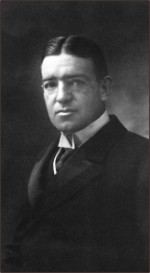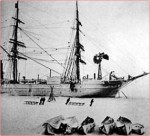Feature
Fortitudine Vincimus
Tanvir Manzoor Hussain
Sir Ernest Shackleton was a famous British explorer who was one of the first people to have attempted to reach the South Pole. This is the story of his legendary expedition.
 After being part of two failed expeditions to reach the South Pole, both terribly long and grueling at that, most explorers would have given up, but for Sir Ernest Shackleton that was never going to be the case. Always hungry for a challenge, he had then turned his attention to arguably an even more dangerous quest - and set himself the task of crossing the continent of Antarctica via the South Pole, something no one had even thought of attempting before him. After being part of two failed expeditions to reach the South Pole, both terribly long and grueling at that, most explorers would have given up, but for Sir Ernest Shackleton that was never going to be the case. Always hungry for a challenge, he had then turned his attention to arguably an even more dangerous quest - and set himself the task of crossing the continent of Antarctica via the South Pole, something no one had even thought of attempting before him.
Soon thereafter he was on his way again, setting sail from England in mid-1914 with a crew of 27 aboard the Endurance (named after his family motto 'by endurance we conquer', taken from the Latin phrase 'fortitudine vincimus') , in what was to become one of the most famous expeditions in history. It's not easy to command a ship through the treacherous waters of the frigid southern seas, or persuade the crew to continue to toil their way through it for that matter, but for the dynamic Shackleton, that wasn't a problem at all. Shackleton was a tireless worker and had the reputation of being an extremely able leader at sea and on land; known lovingly as 'the Boss' by his men, by virtue of his charming, forceful personality he had inspired fierce loyalty and admiration from each of his men throughout this expedition, which he must have realized would be very important if he had to succeed in his mission.
The events that unfolded were quite different from Shackleton's plans, however. In early 1915, five months after leaving England, the Endurance became trapped in pack ice in the Weddell Sea close to the Antarctic mainland, and was eventually crushed and sank. The 28 men were forced to abandon their vessel, and lived under severely cold, wet, uncomfortable conditions on floating ice for months, until a further misfortune hit them their ice floe broke apart. Shackleton then led them through a risky journey to an uninhabited island on a small boat; with rations running low, his typically determined character enabled him to keep his men's spirits up despite the odds they faced.
 Leaving his ailing crew behind, Shackleton heroically set off with just five others (those who were still strong enough) for the nearest whaling station, in one last attempt at survival, which soon became a race against starvation. After 16 exhausting and extremely perilous days, the six men reached the island where the station was, accomplishing perhaps the greatest feat of navigation in history. But the test of Shackleton's incomparable determination was not yet over they had landed on the opposite side of the island from the whaling station. With just two other men still capable of continuing, Shackleton now hiked through the frozen mountainous interior of the island for 36 straight hours and at long last reached help. Within a few weeks of that he had rescued all his other crewmembers, miraculously none of whom had died, thanks to him. Leaving his ailing crew behind, Shackleton heroically set off with just five others (those who were still strong enough) for the nearest whaling station, in one last attempt at survival, which soon became a race against starvation. After 16 exhausting and extremely perilous days, the six men reached the island where the station was, accomplishing perhaps the greatest feat of navigation in history. But the test of Shackleton's incomparable determination was not yet over they had landed on the opposite side of the island from the whaling station. With just two other men still capable of continuing, Shackleton now hiked through the frozen mountainous interior of the island for 36 straight hours and at long last reached help. Within a few weeks of that he had rescued all his other crewmembers, miraculously none of whom had died, thanks to him.
Reading the accounts in his memoir South, which he had written after returning to England in 1917, I have come to admire Sir Ernest Shackleton for his leadership skills and his sheer determination and readiness to take up a challenge, qualities that I myself have always aimed to emulate. He had shown how perseverance and courage can pull us through the toughest of times, and what leadership and selflessness is all about. Shackleton may never have reached his destination, but he had achieved success even after failure. To me, that's his most inspiring legacy.'
(The writer is a student of Williams College, USA)
|
